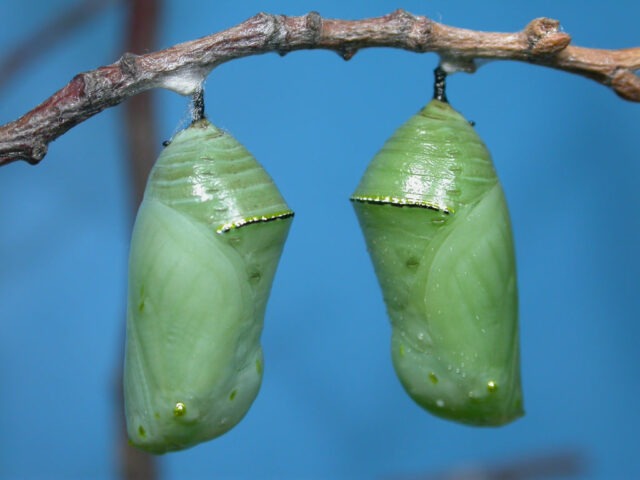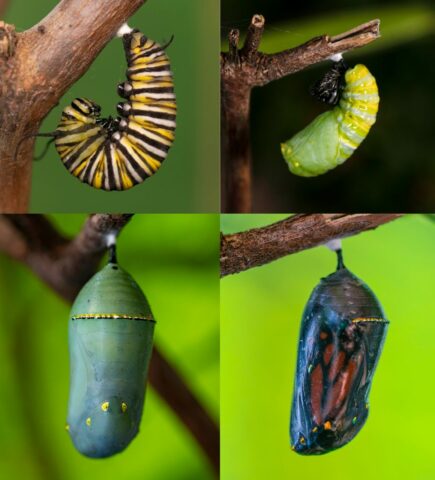They are called Heliconius doris de sobando, a name reflected in butterfly eggs. An entire industry in Costa Rica depends on them. Hundreds of families in the Central American country make a living from raising nymphs and exporting their chrysalis. There is probably no other country that exports as many as Costa Rica.
In butterflies, the pupa is called chrysalis, it is a stage where the chrysalis hang on a kind of silk produced by the caterpillar. Its duration can be a couple of weeks and can vary according to the species.
Is the production of pupae equal to that of other products in CR?
Compared with other products such as pineapple, banana or coffee, butterfly pupae are not really very significant for the country’s economy, but for small producers who earn their livelihood independently, sustainably and therefore, respecting the environment. It is worth noting that various people give workshops to train -future producers- of chrysalis.
First it is an egg, after 10 days a larva will be born, which they put to eat for two months, it depends on the climate where they are, to become a chrysalis, which is when it is exported to the whole world, mainly Europe.
This is a business that annually generates more than 2,700 million dollars in Costa Rica, only one shipment can have a value of 15,000 dollars, where nymphs are protected from fluctuations in temperature.

To make chrysalis breeding a success …
Each species of chrysalis requires suitable living conditions, a very special growth, as well as suitable plants, planted for larvae. This requires a lot of gardening work, so that the insects have food throughout the year. It is worth noting that some species are raised in elevated regions or in humid areas, or even in dry regions. An important fact is that the chrysalis are exported, not the adult butterflies.

Where to find them?
Among many, there is a land of more than 4,000 hectares in San Ramón de Palmares, which is an hour and a half from San José, (by car). Many of the experts on the subject have developed research programs at the University of Costa Rica, where they work with everything that has to do with insects, mainly butterflies and their pupae.
Costa Rica with its enormous biodiversity and different climatic zones is truly a paradise for the chrysalis and their breeders, who run a business for everyone, in a responsible manner and with respect for the environment that surrounds us.

